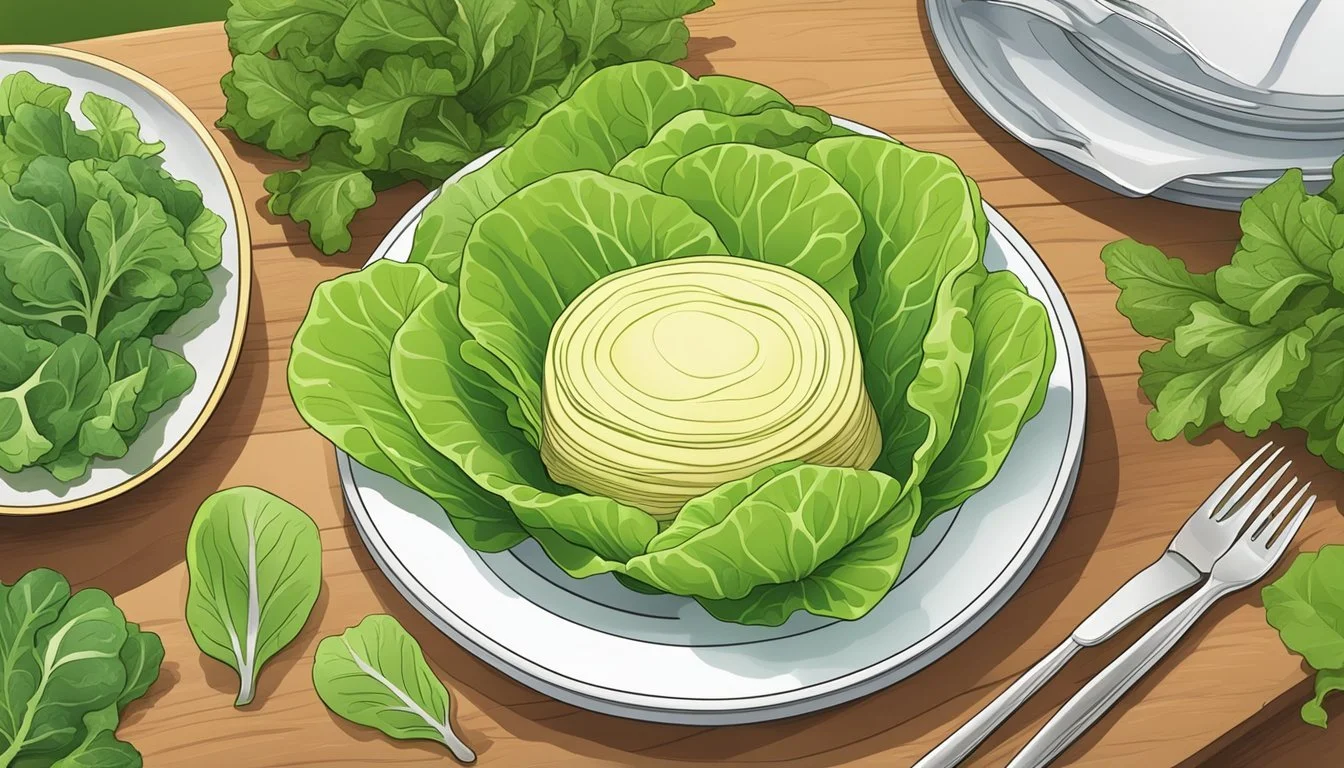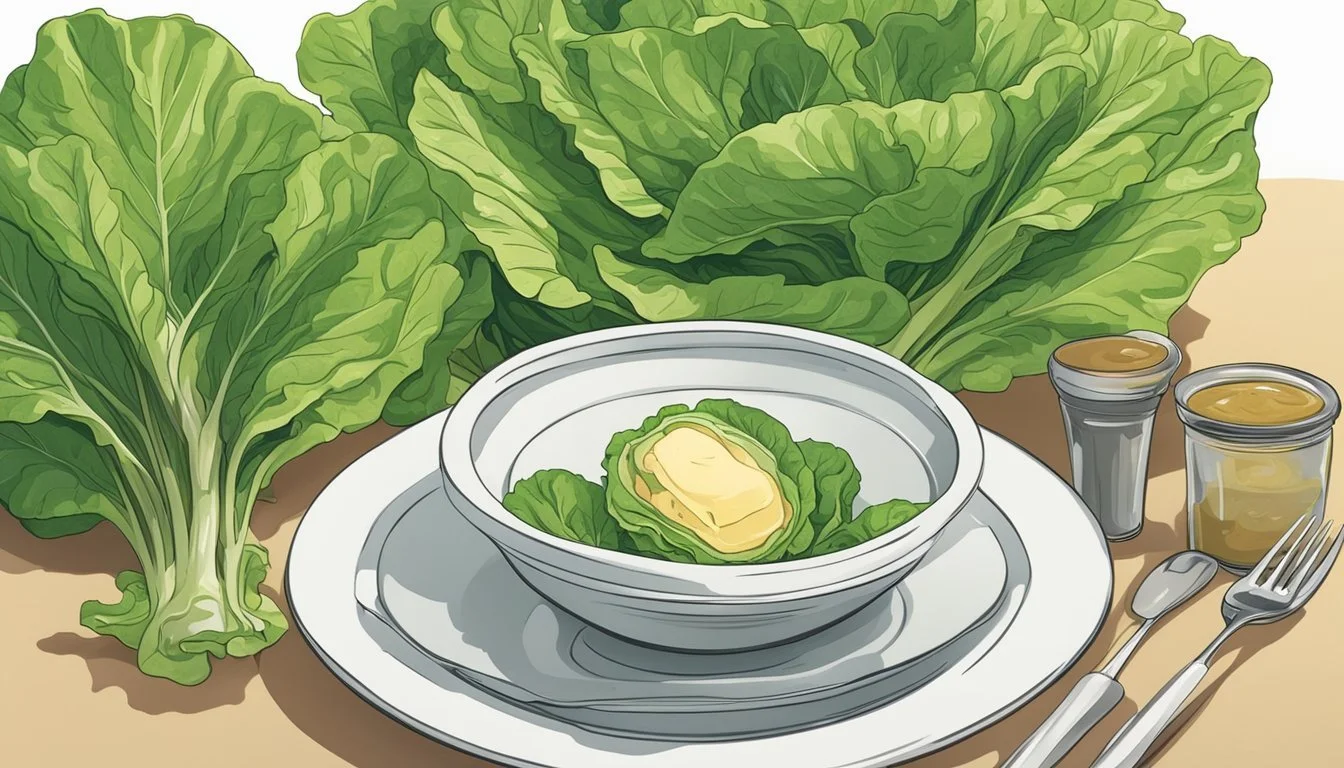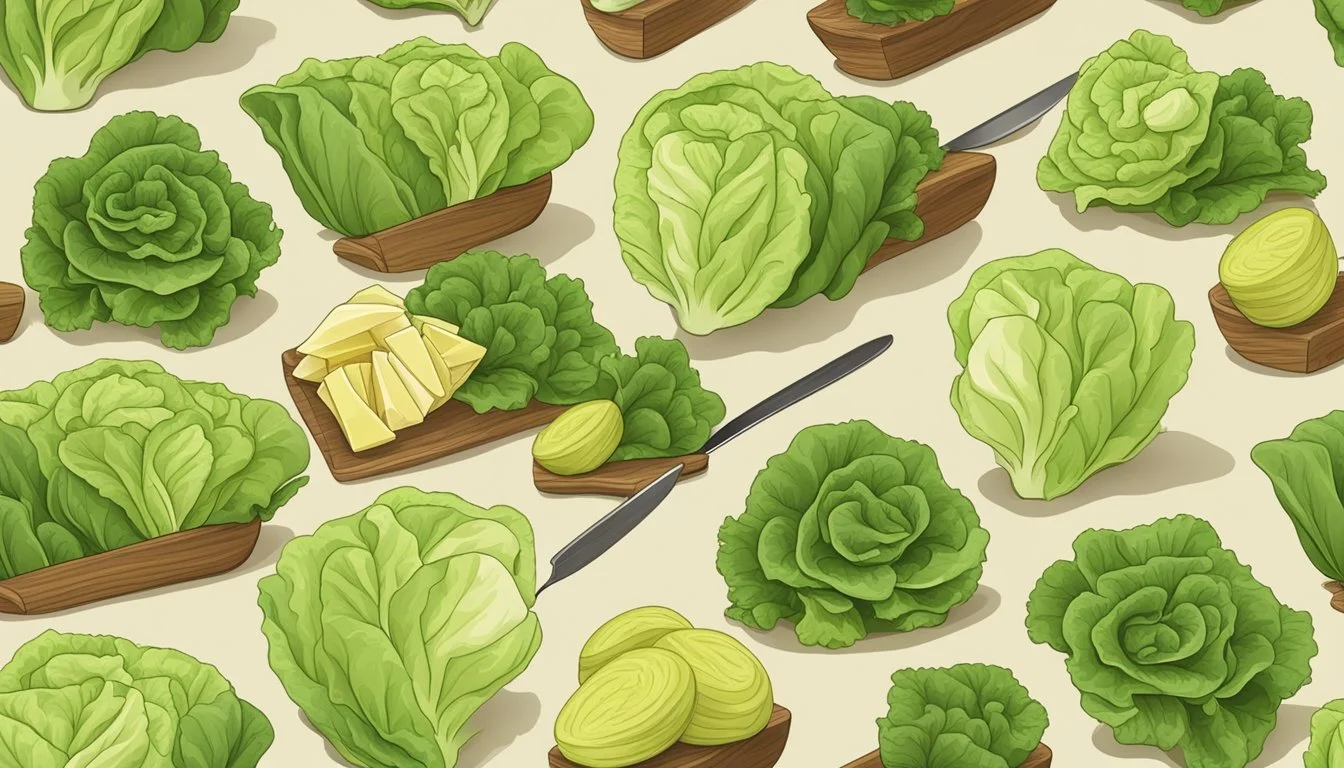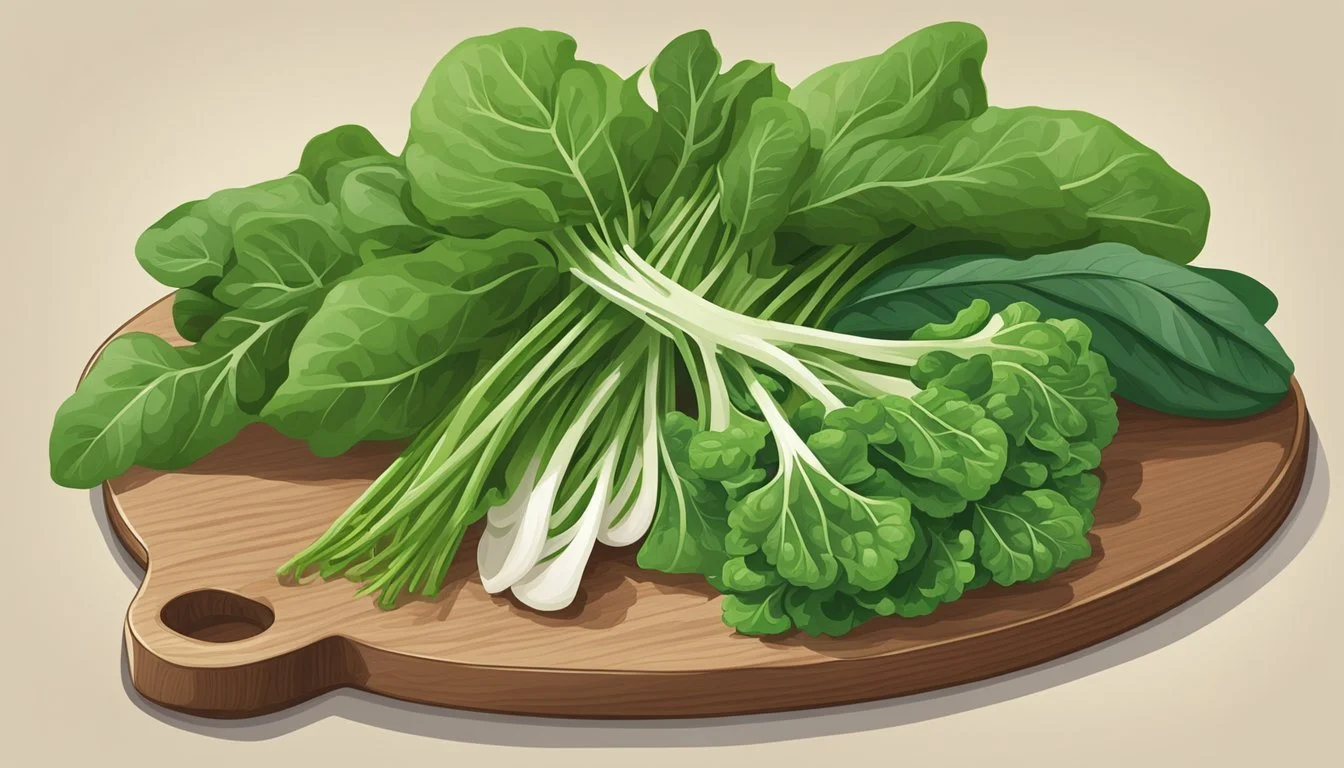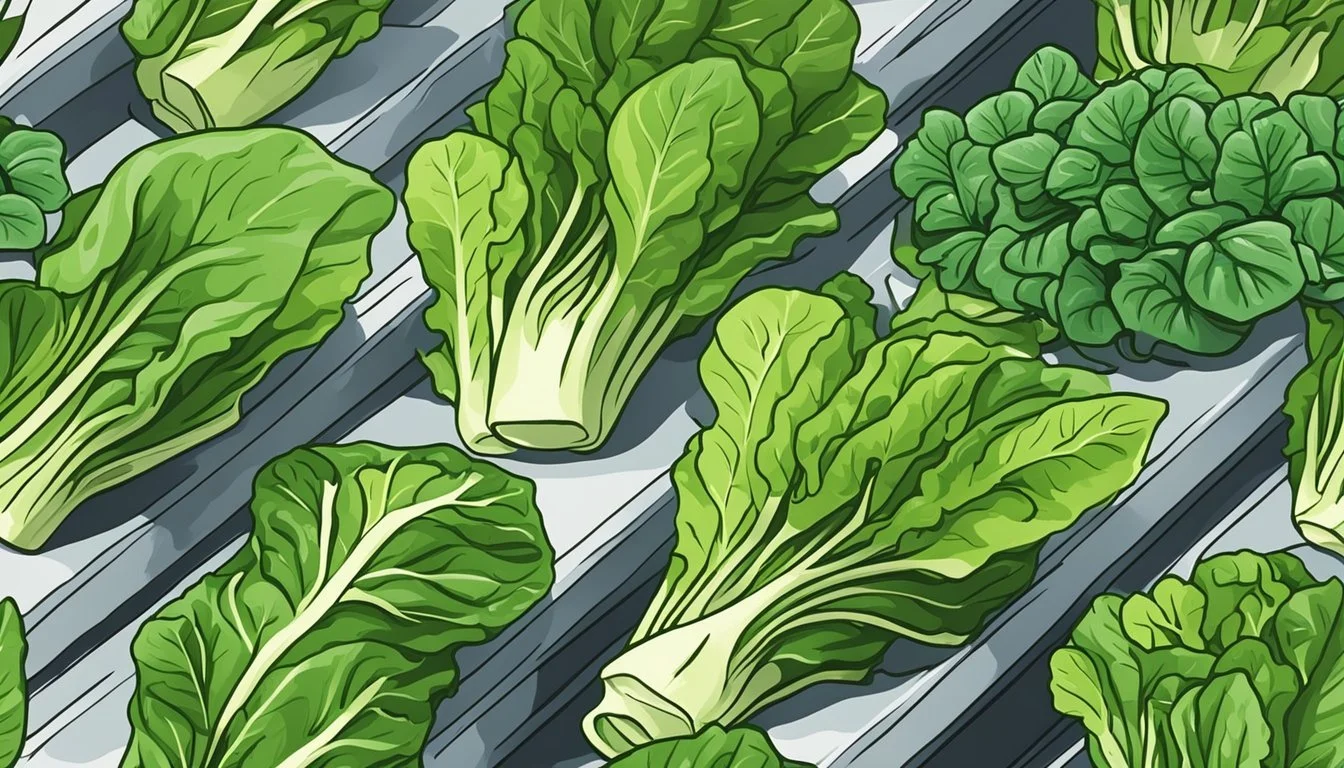Butter Lettuce Substitutes
Best Greens for Your Salad
Butter lettuce, often recognized by its soft, tender leaves and mild flavor, is a favorite in many kitchens for salads and sandwiches. Whether you know it as Boston or Bibb lettuce, this green leafy vegetable brings a delicate texture and subtle taste to numerous dishes. When butter lettuce isn't available, several substitutes can provide similar culinary benefits, ensuring your meals remain fresh and flavorful.
Among the best substitutes are Romaine and iceberg lettuce. Romaine offers a crisp texture, while iceberg brings a refreshing crunch, both making them excellent alternatives in various recipes. Swiss chard and arugula, though slightly more robust in flavor, can also lend themselves well as replacements, adding a unique twist to the classic butter lettuce profile.
Additionally, options like escarole and spinach maintain the soft texture and slight bitterness that can replace butter lettuce effectively. Each of these substitutes not only matches the texture but also ensures that you don’t compromise on the essential vitamins and minerals present in your dishes. By choosing the right alternative, you can continue to enjoy delicious and nutritious meals even in the absence of butter lettuce.
Understanding Butter Lettuce
Butter lettuce, also known as butterhead or Bibb lettuce, is noted for its tender texture and sweet flavor. It is popular in salads and offers a range of nutrients, including vitamin K and folate.
Characteristics of Butter Lettuce
Butter lettuce is characterized by its delicate, soft leaves that form a loosely packed head. The leaves are bright green and slightly ruffled. Unlike crisper varieties such as romaine, butter lettuce leaves have a buttery texture, hence the name. This variety thrives in cool temperatures, usually between 60°F and 70°F. It grows best in well-drained soil rich in organic matter and requires consistent watering to maintain its tender leaves.
Culinary Uses of Butter Lettuce
Butter lettuce is primarily used in salads due to its delicate texture and mild, sweet flavor. The soft leaves make an excellent base for various salads, pairing well with vinaigrettes and light dressings. It is also suitable for wraps, providing a fresh alternative to tortillas. In addition to raw uses, butter lettuce can be lightly sautéed or added to soups, though it is most often enjoyed fresh. It serves as a versatile ingredient that complements a variety of dishes.
Nutritional Profile of Butter Lettuce
Butter lettuce is low in calories yet rich in essential nutrients. A significant feature of its nutritional profile is its high content of vitamin K, which is crucial for blood clotting and bone health. The lettuce also contains folate, important for DNA synthesis and repair. Additionally, it provides vitamins A and C, contributing to skin health and immune function. Each cup of butter lettuce contains roughly 0.5 grams of protein, highlighting it as a nutritious but low-protein option.
Selecting Substitutes for Butter Lettuce
When selecting substitutes for butter lettuce, it is important to consider both the texture and flavor requirements of your dish. Different substitutes work best for different settings such as salads, wraps, and sandwiches.
Criteria for Choosing Lettuce Substitutes
Texture and Flavor:
Butter lettuce is known for its soft, buttery texture and mild flavor. For a close match, consider substitutes like Boston Lettuce and Bibb Lettuce, which share a similar tender texture and subtle taste. If a crisper texture is desired, Iceberg Lettuce offers a crunchier alternative while maintaining a mild flavor profile.
Nutrient Content:
Substitutes like Spinach and Romaine Lettuce not only have a similar texture but also provide a nutrient boost. Spinach is rich in vitamins A and C, making it a healthy option for cooked recipes.
Common Scenarios for Substitution
Salads:
For salads, Red Leaf Lettuce and Loose-Leaf Lettuce are excellent substitutes. They ensure vibrant, diverse flavors while maintaining a delicate texture. Arugula can be used for a peppery kick, though it has a stronger flavor.
Wraps and Sandwiches:
In wraps and sandwiches, Napa Cabbage works well due to its sturdy texture that holds fillings without becoming soggy. Romaine Lettuce is another sturdy option, adding a bit more crunch while still providing the necessary structural integrity.
By carefully considering the texture and flavor needs, as well as the specific use case, you can effectively select the best butter lettuce substitute for your culinary creations.
Leafy Greens as Substitutes
When looking for substitutes for butter lettuce, several leafy greens can serve as excellent alternatives. These greens offer varying textures, flavors, and nutritional benefits, making them suitable for different recipes and dietary needs.
Romaine Lettuce
Romaine lettuce is a popular replacement due to its crisp texture and mild flavor. It has long, sturdy leaves that hold up well in salads and sandwiches. Nutritionally, romaine is rich in vitamins A and C, and it provides a good amount of fiber, promoting digestive health.
The sturdy leaves can serve as wraps or bases for hearty salads. Its slightly more robust texture makes it a versatile option for various culinary applications, from Caesar salads to grilled dishes.
Spinach
Spinach offers a tender texture and a slightly sweet flavor, making it a versatile substitute for butter lettuce. It is packed with essential nutrients like iron, calcium, and antioxidants, which support overall health. Spinach can be used in both raw and cooked dishes.
In salads, baby spinach works best due to its delicate leaves. It also pairs well with fruits, nuts, and soft cheeses. In cooked dishes, spinach wilts quickly but retains its flavor, making it ideal for soups, pastas, and stir-fries.
Kale
Kale is a robust green with a slightly bitter taste and a chewy texture. Known for its high nutritional value, kale is rich in vitamins K, A, and C, as well as antioxidants and fiber. These benefits make it a popular choice for health-conscious individuals.
Before using kale in salads, it is often recommended to massage the leaves to soften their texture. Kale can also be used in hearty dishes like soups, stews, and casseroles, where its texture holds up well to prolonged cooking.
Green Leaf Lettuce
Green leaf lettuce is another excellent substitute, characterized by its loose, ruffled leaves and mild flavor. It is similar in texture to butter lettuce but with a slightly stronger taste. Green leaf lettuce is a good source of vitamins A, C, and K, and it contributes fiber to the diet.
Its tender leaves are suitable for wraps, sandwiches, and delicate salads. Their large size allows them to be used as beddings for other salad ingredients or proteins, making them versatile in presentation and utility.
Red Leaf Lettuce
Red leaf lettuce offers a colorful and flavorful alternative to butter lettuce. It is visually appealing due to its reddish-purple tips and has a mild, slightly nutty flavor. Red leaf lettuce is rich in vitamins A and K and provides antioxidants that benefit overall health.
The texture of red leaf lettuce is tender, making it ideal for salads and garnishes. The color contrast adds visual interest to dishes, and its flavor pairs well with a variety of dressings and toppings, enhancing the overall dining experience.
Crisphead Varieties for Texture
Crisphead varieties, with their firm and crunchy texture, are excellent alternatives to butter lettuce. They retain their structure well, making them suitable for various culinary applications.
Iceberg Lettuce
Iceberg lettuce, also known as crisphead, offers a robust crunch. This variety holds up well in a myriad of dishes, from salads to sandwiches, providing a satisfying bite that contrasts with more delicate greens. Iceberg’s texture pairs ideally with heavier toppings and dressings, as it does not easily wilt under pressure. Its high water content also means it is incredibly hydrating. Nutritionally, while it may not be as rich in vitamins as some leafy greens, it excels in delivering a fresh, crisp note to any meal.
Crisphead Lettuce
Crisphead lettuce includes varieties beyond just Iceberg, all sharing the characteristic crunch that makes them favorites in both home kitchens and professional settings. These lettuces have tightly packed leaves that maintain texture even when combined with moist or acidic ingredients. This makes crisphead varieties particularly suitable for dishes requiring sturdiness and substantial texture, such as lettuce wraps, tacos, and chopped salads. They are often compared to cabbage due to their structure, offering a similar crunch but with a lighter, fresher taste which can elevate any culinary creation.
Other Lettuce Varieties
There are several other types of lettuces that can easily replace butter lettuce. Each variety has its own unique characteristics, from texture to flavor profiles, offering versatile options for salads and recipes.
Boston Lettuce
Boston lettuce, also part of the butterhead variety, is known for its large, loose, and rounded leaves. It is slightly larger than other butterhead types and has a tender texture that adds a delicate touch to dishes. The leaves are soft yet sturdy enough to hold dressings and may be used as wraps or bed for various ingredients.
The flavor of Boston lettuce is mild and slightly sweet, making it a versatile ingredient in both salads and sandwiches. It grows well in cooler climates and requires consistent watering for optimal leaf health. Its high vitamin and mineral content make it a nutritious addition to any meal.
Bibb Lettuce
Bibb lettuce, another butterhead lettuce, is smaller and more delicate than Boston lettuce. It typically has tighter, cup-shaped leaves that are perfect for single servings or small wraps. Due to its tender and fragile nature, it needs careful handling to avoid bruising.
Bibb lettuce's flavor is mild and buttery, similar to Boston lettuce, with a hint of sweetness. It is often preferred for fine dining dishes because of its attractive appearance and delicate texture. Despite its fragility, its nutritional profile is strong, including high levels of vitamins A and K.
Cos Lettuce
Cos lettuce, commonly known as romaine, offers a distinct contrast with its crisp texture and elongated, sturdy leaves. It's well known for its use in Caesar salads due to its ability to hold up well to creamy dressings. Unlike the softer butterhead varieties, Cos lettuce provides a satisfying crunch that many people enjoy.
The flavor of Cos lettuce is more robust, slightly bitter compared to butterhead lettuces. Nutrition-wise, it is rich in vitamins A and K, and also provides dietary fiber. Its hardy nature makes it suitable for grilling or incorporating into more substantial dishes like wraps and sandwiches. Cos lettuce grows well in a variety of climates and is relatively easy to cultivate.
These varieties provide a broad spectrum of flavors and textures, fitting numerous culinary needs and preferences.
Non-Lettuce Alternatives
When looking for substitutes to butter lettuce that are not lettuce, several leafy greens and vegetables can serve as excellent replacements. These alternatives not only offer different flavors but can also add various textures to dishes.
Using Cabbage as Substitute
Cabbage offers a crunchy texture and can hold up well under heavy dressings, making it a strong candidate for replacing butter lettuce. Both green and red cabbage provide a firm bite and a slightly peppery flavor.
Using cabbage can diversify the palette of a salad or sandwich, especially when shredded finely. Napa cabbage is particularly versatile, combining a milder flavor with a crisp texture, making it suitable for a wider range of dishes.
Incorporating Spinach and Swiss Chard
Spinach and Swiss chard are packed with nutrients and can easily replace butter lettuce in many dishes. Spinach leaves are tender yet hold enough structure to work well in salads and cooked dishes.
Swiss chard offers a heartier alternative, with its slightly earthy taste and attractive colorful stems. Chopped swiss chard can add both visual appeal and nutritional value to your meals, making it a thoughtful substitute.
Napa Cabbage and Bok Choy
Napa cabbage has narrower, softer leaves than traditional cabbage and provides a subtle sweetness. It's excellent for wraps, salads, and sautéed dishes. When used as a butter lettuce replacement, Napa cabbage can enhance the meal with its delicate texture and mild flavor.
Bok choy, with its crisp white stems and tender green leaves, can be used in both raw and cooked applications. It's ideal for stir-fries, soups, and salads, offering versatility and a slight crunch that pairs well with various flavors.
Creative Uses of Arugula and Frisée
Arugula brings a peppery punch that can invigorate any dish, making it an exciting alternative to the milder butter lettuce. It's a great addition to salads, providing a zesty bite and fresh, unique taste.
Frisée, with its curly leaves and slightly bitter flavor, adds texture and complexity to salads. It pairs well with dressings and other bold ingredients, offering both a visual and taste contrast to softer lettuces. Use frisée to create interesting and diverse salads that stand out.
Thoughtful use of these non-lettuce alternatives can enhance culinary creativity, bringing new dimensions of flavor and texture to everyday meals.
Maintaining Freshness and Storage
Ensuring butter lettuce remains fresh and undamaged requires proper storage techniques and preventative measures against wilting.
Proper Storage Techniques
Butter lettuce should be stored in the refrigerator at temperatures between 32°F and 36°F (0°C and 2°C) to maintain its freshness. Remove any damaged or wilted leaves before storing.
Use perforated plastic bags or airtight containers lined with paper towels to absorb excess moisture.
For optimal results:
Wrap the lettuce in a slightly damp paper towel or cloth.
Place the wrapped lettuce in a resealable bag or container.
Press out any excess air before sealing the bag.
Label and date the storage bag to keep track of freshness.
Preventing Wilting and Damage
To prevent wilting, avoid washing butter lettuce before storing as excess moisture can cause the lettuce to become slimy. Trim the base and ensure the leaves are dry before storage.
Maintaining consistent moisture levels is key to preventing damage. Early morning watering, if the lettuce is still in the soil, reduces the risk of mildew.
Avoid overcrowding lettuce heads in storage to prevent crushing and damage. This ensures air circulates properly, keeping the lettuce fresh longer.
Culinary Tips and Tricks
Using butter lettuce substitutes effectively can enhance a variety of recipes, from salads to wraps. It is important to select and prepare the substitutes properly to maintain the intended texture and flavor profiles.
Preparing Substitutes for Different Recipes
When substituting butter lettuce in salads, romaine lettuce offers a slightly crispier texture. Spinach can be a nutritious alternative, rich in vitamins and minerals, adding a slight earthy taste. For a peppery kick, arugula is suitable, though it may alter the salad’s mild flavor profile.
In sandwiches, iceberg lettuce provides a crisp bite, complementing ingredients without overpowering them. For wraps, Swiss chard and collard greens are sturdy enough to hold fillings, making them ideal replacements. Both should be blanched to soften their texture without losing structural integrity.
Making Perfect Lettuce Wraps
For lettuce wraps, Swiss chard and collard greens work well due to their large, sturdy leaves. Napa cabbage can also be used, adding a slight sweetness.
To prepare, blanch the leaves briefly to make them pliable. Pat them dry with paper towels to prevent sogginess. Fillings like ground chicken, water chestnuts, and green onions work exceptionally well, mirroring restaurant-style wraps such as those from PF Chang’s. Balance flavors with sauces like hoisin, soy, or Sriracha for a delicious, easy-to-eat wrap perfect for any meal.

